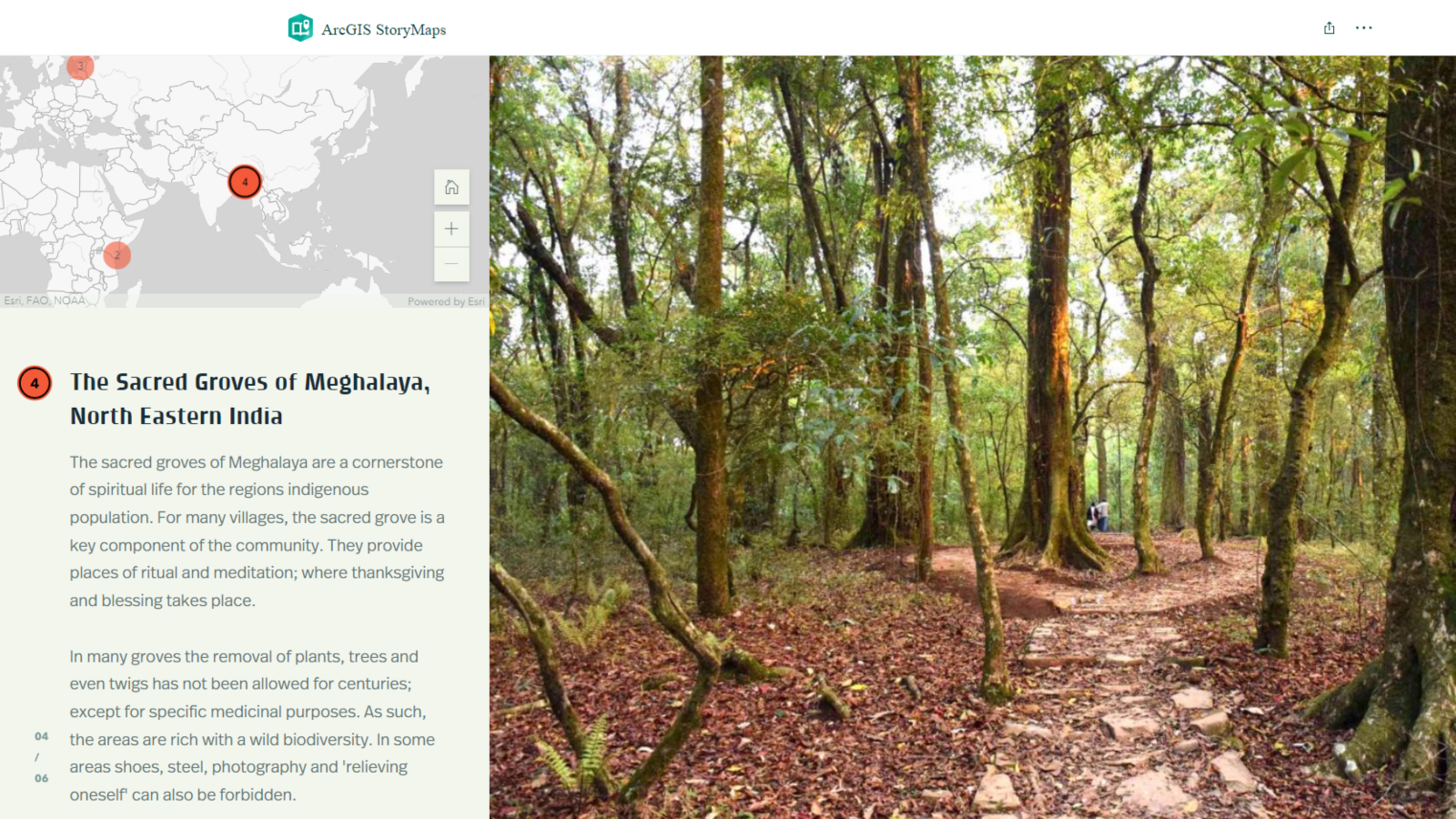Sacred trees of the indigenous world—Nayte Hardaker
A brief illustration of the way a reverence for trees permeates indigenous culture worldwide.
Click this link to explore Nayte's interactive map yourself: https://arcg.is/1f1Dj4

We spoke with Nayte about their approach to this assessment.
I see you wrote a bit about why you chose to look at protest but are there any further reasons that drew you to an interest in this kaupapa?
I chose to focus my assignment on this kaupapa because I find it interesting that a lot of Western cultures (New Zealand included) find it difficult to reconcile with the idea of natural structures such as trees or stones having significant spiritual and historic value. A tree can be hundreds or even thousands of years old and has been a special place for people over the centuries yet, someone will chop it down with little thought. In contrast, getting permission to demolish a building that has been around for half the time can be nearly impossible, or conversely; a building like Notre Dame will catch fire and millions of dollars will be donated in an effort to rebuild it. The map is intended to give a glimpse at the way in which reverence for trees specifically is almost uniform across indigenous cultures; implying that something has been lost in the move to Western belief systems.
What was an interesting discovery you made during the creation of this assessment (personal or academic)?
Honestly, I often forget that Europe has indigenous cultures (although fleeting) that share indigenous values much like the rest of the indigenous world.
Why did you want to showcase your work?
Because I think the knowledge encompassed in it could be interesting to many people; outside of the ~3 who see it in the course.
Would you recommend the course, and why?
Absolutely. MAOR302 allows students to focus on what they think is relevant in the indigenous science world. There are core themes and directions throughout the course but students have the capacity to shape these themes in a way that fosters their own interests rather than having to do entirely prescriptive work.
